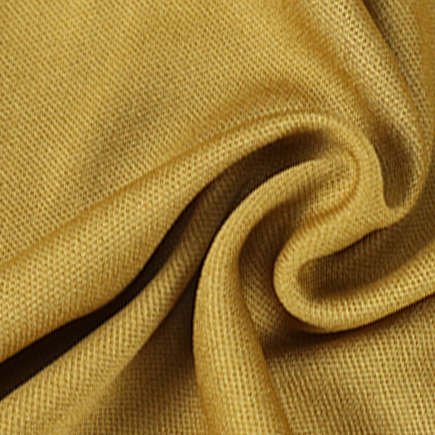According to the introduction, the textile fabric composed of fiber, its porous object shape and polymer chemical structure is conducive to microbial adhesion, become a good parasite for microbial survival, reproduction. Parasites in addition to the harm to the human body will also contaminate the fiber, so the main purpose of antibacterial fabrics is to eliminate these adverse effects.
Antibacterial fabrics have bactericidal and antibacterial effects. Bactericidal, killing microbial nutrients and propagules; antibacterial, preventing or inhibiting microbial growth and reproduction.
Antibacterial fabrics can efficiently remove the bacteria, fungi and mold on the fabric, keep the fabric clean, and prevent the regeneration and reproduction of bacteria, the main antibacterial including Staphylococcus aureus, Escherichia coli, methicillin-resistant Staphylococcus aureus MRSA, Klebsiella pneumoniae, Candida albicans, mold with Aspergillus niger, ball hair shell, sprouting short-stalk mold, Gramnegative bacteria, gonococcus, etc., other such as anti-mites, anti-odor, etc. Protection function can also be developed according to customer needs.
Antibacterial fabrics are widely used. It can be applied to
1) Clothing and apparel textile fabrics (finished products), especially the daily dress of people who are in contact with more bacteria and people who are weak, easy to get sick and allergic.
2) Textile fabrics for shoes, hats, hoods, masks, underwear, socks and other skin-friendly products (finished products).
3) textile fabrics for household and bedding products.
4) textile fabrics for outdoor and sports goods.
5) Textile fabrics for children's products and toys.
6)Textile fabrics for humid environment. The above application scenarios can efficiently prevent the retention and reproduction of various types of bacteria and solve the problems of odor and mold caused by bacterial reproduction.
Antibacterial fabrics use encapsulation technology to compound silver ion antibacterial, making full use of the antibacterial effect of silver ion, and extending the time of silver ion retention in fabrics, increasing the anti-washing effect. Another technology is Guangdong Xinfeng Technology's own intellectual property rights of nano surface treatment technology, using nano silver, nano tin powerful antibacterial, mainly for chemical fiber textile fabrics. Customized production according to customers' application scenarios and cost requirements.

It is understood that the company's antibacterial cotton, cotton polyester, chemical fiber fabric has passed the third-party testing institutions, antibacterial longevity can reach 50 times after washing, antibacterial 99%. Nano surface treatment technology antibacterial products have passed the European TESTEX heavy metal test, there is no heavy metal overload situation.
At the same time, if the customer has the demand, we can send all kinds of tests on behalf of the customer, and assist the customer to quickly complete all kinds of textile fabric testing and issue a report.
Attachment: Silver ion antibacterial principle
The antimicrobial effect of materials refers to the impact and consequences of a material on the vitality of microorganisms, focusing on the growth, reproduction and death of microorganisms. Among all antimicrobial materials, silver ion is a broad-spectrum antibacterial good material, its antibacterial effect mechanism has the following aspects.
(1) interfere with the synthesis of the cell wall. Bacterial cell wall important component of peptidoglycan, silver ion antibacterial interference with the cell wall, the main inhibition of polysaccharide chains and tetrapeptide cross-linking there are links, so that the cell wall loses integrity, lost the protective effect of osmotic pressure, damage to the body and death.
2) Can damage the cell membrane. Cell membrane is an important part of the life activities of bacterial cells, such as cell membrane damage, destruction, will lead to bacterial death.
3) Inhibit the synthesis of proteins. The protein synthesis process is changed, stopped, and causes cell death.
4) Interference with nucleic acid synthesis. In general, it hinders the replication of genetic information, including DNA/RNA synthesis, and transcription of mRNA from DNA template, etc.
(5) In the period when the new coronavirus pneumonia became a world epidemic, silver ion, in addition to having good antibacterial properties, can also interfere with the nucleic acid synthesis of viruses and hinder the replication of genetic information, including the synthesis of DNA, RNA, and DNA template transcription mRNA, etc., thus killing pathogenic bacteria and viruses, etc. In addition, silver is well able to disrupt the structure of viral proteins and bind to the sulfur atoms in the proteins, resulting in protein inactivity. According to the "Trial pneumonia treatment protocol for novel coronavirus infection, 3rd edition" published by the Office of the National Health Care Commission, the novel coronavirus contains sulfur protein, which is located on the surface of the virus in a rod-like structure. According to the results of a new Swiss laboratory study, silver can effectively kill the new coronavirus containing sulfur protein.
Contact: Jeanne yang(MISS)
Phone: 13912652341
E-mail: [email protected]
Add: Room A2216/A2217,Double-Star Building,No 567 New South Middle Road, KunShan City JiangSu Province ,China.